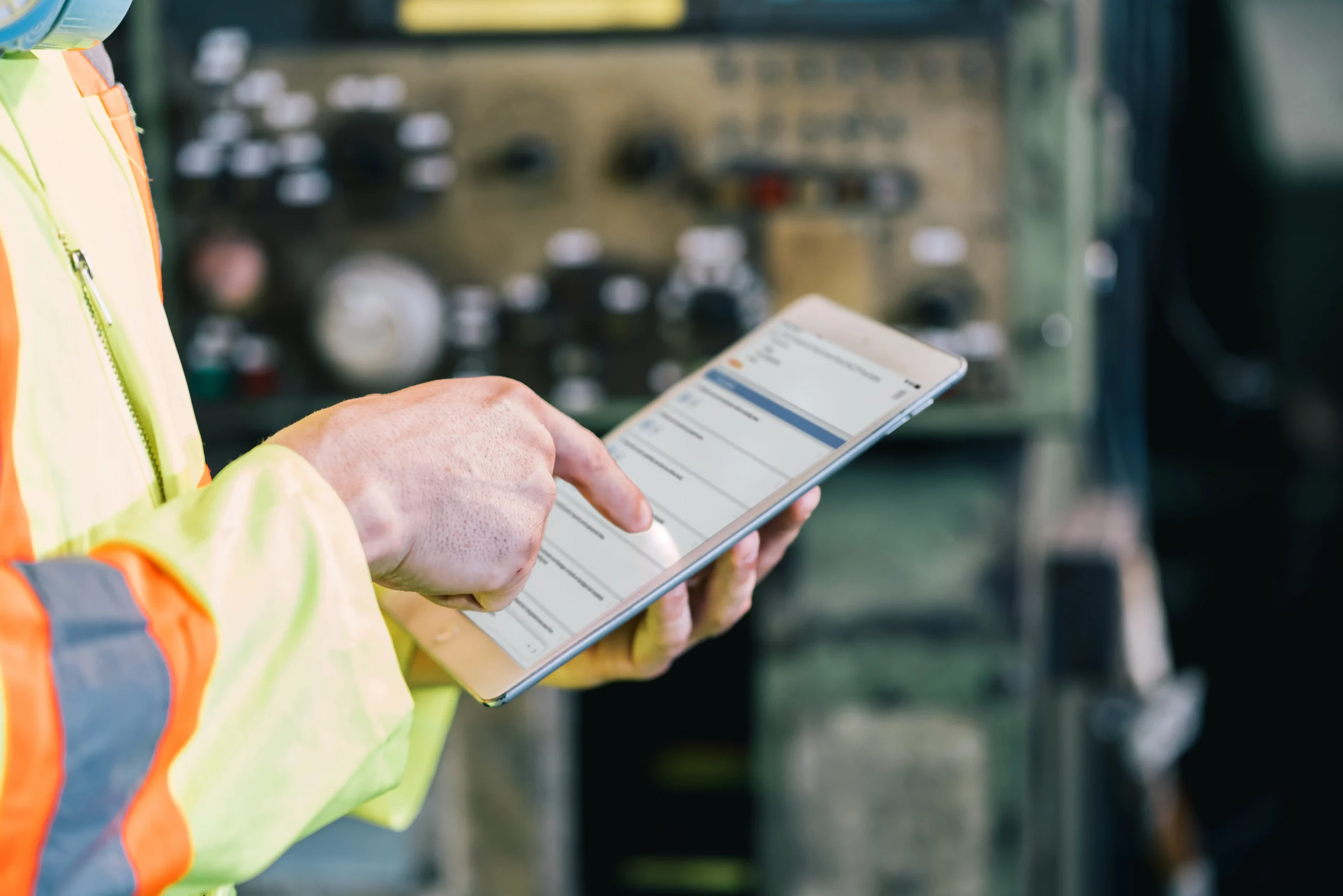Table of contents
Artificial Intelligence is a reality that is shaping how global organizations prevent accidents, safeguard employees, and comply with growing regulatory pressures. Where traditional safety practices have relied heavily on manual processes, reactive responses, and fragmented reporting, AI-powered safety management systems introduce something fundamentally new. That is the ability to learn, anticipate, and adapt continuously. The core of this transformation lies in a set of AI technologies that are already reshaping how safety professionals manage risk.
Visualization Solutions: Seeing Safety in a New Light
For decades, safety data was something teams collected reluctantly but struggled to interpret effectively. Mountains of checklists, inspection reports, and compliance documents were generated each year, yet the information was often locked inside static spreadsheets or PDF files. Visualization technologies, enhanced by machine learning algorithms and computer vision, have shifted this paradigm.
AI-driven visualization now goes far beyond data dashboards. Using a combination of natural language processing, image recognition, and data analysis, these systems can interpret inspection photos, audit records, and operational documents in real time. Instead of simply archiving a picture of a potential hazard, the technology can identify what the hazard represents, link it to safety regulations such as OSHA, and assign corrective actions. This ability to contextualize information reduces the cognitive load of sifting through massive datasets of audit results and instead provides clarity at a glance.
Consider a high-risk manufacturing facility where supervisors must review hundreds of photos taken during inspections. With AI-driven visualization such as Certainty’s AI Vision, images are automatically flagged when they reveal nonconformances, such as missing PPE or blocked emergency exits. Rather than reacting weeks later when reports are compiled, supervisors receive real-time alerts to act. The result is closing the dangerous gap between observation and intervention through automation that helps streamline safety workflows.
Moreover, visualization is also a cultural shift. When AI-enabled visualization functions make safety measures easily accessible and shareable, they empower frontline workers, managers, and executives alike. This creates a more data-driven safety culture, democratizing insights and reinforcing safety standards across the organization.
Automated Safety Insights: From Guesswork to Precision
One of the long-standing challenges in safety management is the reliance on assumptions. Safety leaders often extrapolate from high-level performance metrics, making decisions based on generalized trends rather than specific evidence. This approach can lead to inefficiencies, wasted resources, or worse—missed hazards that result in preventable incidents.
AI is changing this dynamic by introducing automated insights that use AI algorithms to drill down to the micro-level of safety performance, analyzing each audit checklist or incident report individually. Instead of relying on assumptions, leaders now have clarity about which processes are underperforming, where safety risks consistently occur, and how corrective actions should be prioritized.
For example, if a global construction firm identifies recurring fall-protection violations, the natural response in a pre-AI world might be to retrain all employees across all sites. AI-enabled insights, however, might reveal that violations are concentrated within a single subcontractor team at two particular worksites. Armed with that level of detail, leadership can target interventions with laser precision, saving time, money, and disruption while still addressing the root cause.
Beyond efficiency, automated insights also build confidence in safety programs. Teams no longer need to question whether their efforts are making an impact, because tools like Certainty’s AI Insights can track and display improvements in near real time. Leaders can see not just what went wrong but also where corrective interventions are working, enabling continuous improvement over time. This creates a cycle of proactive safety management, where each decision builds on the lessons of the last.
Predictive Analytics: Anticipating Risks Before They Become Incidents
Perhaps the most transformative applications of AI in safety management are in predictive analytics. For years, organizations aspired to move from reactive responses—dealing with incidents after they occur—to proactive safety. Predictive technologies bring that vision within reach by uncovering subtle patterns in datasets far beyond human capability.
AI algorithms can ingest streams of information from global inspections, incident reporting logs, sensor outputs, and environmental conditions, searching for anomalies and early indicators of potential hazards. Not bound by human limits, these AI-driven systems can detect correlations invisible at first glance. For instance, a repeated pattern of downgraded audit scores in a particular equipment category may forecast an impending equipment failure, while shifts in humidity levels may correlate with increased slip hazards.
The ability to act before an incident occurs changes the economics of risk management. Instead of absorbing the financial and reputational costs of accidents, organizations can justify proactive investments in maintenance, training programs, or redesign.
In many ways, predictive analytics like Certainty’s AI Analytics represents the role of AI as a strategic advantage. Organizations that can reliably anticipate risks will not only protect their workforce and enhance worker safety but also optimize functions across operations, improve sustainability, and build trust in their brand reputation.

30+ Audit and inspection checklists free for download.
Real-Time Monitoring and Alerts
Safety has traditionally been retrospective. Incidents were logged after the fact, inspections were reviewed days or weeks later, and reports arrived at leadership long after hazards had already posed risks. Real-time monitoring, enabled by AI and IoT, has fundamentally redefined this timeline.
With connected devices, drones, robotics, and AI-enabled systems, organizations can track safety conditions as they unfold. The true breakthrough lies not in real-time data collection, but in what AI does with it. As AI-powered safety systems analyze and interpret data streams, they issue instant alerts when conditions deviate from safety protocols.
Consider the example of a high-speed manufacturing plant. AI can simultaneously analyze CCTV footage showing a worker without proper PPE while also reading vibration data from a nearby machine that signals impending malfunctions. Instead of waiting for these issues to manifest, the system immediately flags both risks, notifies supervisors, and even triggers pre-defined workflows such as lockout-tagout procedures for mitigation.
These AI-driven initiatives create continuous accountability. Workers know that deviations from safety standards are visible, supervisors gain assurance that hazards are being managed proactively, and organizations can demonstrate to regulators that they have comprehensive, cutting-edge safety systems.
AI for Rethinking Workplace Education and Readiness
Education and safety training programs are cornerstones of safety culture, but traditional approaches (manuals, slides, and static videos) have long struggled to prepare employees for the complexity of high-risk environments. AI-enabled immersive training changes this by combining augmented reality, virtual simulations, and machine learning models to create environments where employees can learn by doing.
In these simulations, workers can be immersed in realistic, high-stakes scenarios: navigating a warehouse filled with moving forklifts, responding to machine malfunctions, or practicing evacuation procedures during a chemical spill. Unlike traditional training, these experiences are interactive and adaptive. AI tailors them to the specific hazards of a workplace, ensuring relevance and direct applicability.
The benefit extends beyond engagement. Simulations improve knowledge retention and build muscle memory that translates to real-world emergency responses. Equally important, AI captures metrics during training to identify where individuals struggle, allowing for targeted coaching and continuous improvement. Over time, this creates a proactive approach to preparedness that strengthens both compliance and confidence.
Wearable Technology: Personalized, Real-Time Safety
The final category of enabling technologies is wearable devices. This represents perhaps the most personal evolution in occupational safety. Unlike systems that focus on broad organizational trends, wearables bring AI-enabled functions to the level of individual workers, monitoring their unique conditions and surroundings.
Equipped with sensors that track biometric and environmental conditions, wearables can detect early signs of heat stress, fatigue, dehydration, or toxic gas exposure. When thresholds are crossed, the devices issue real-time alerts to both the worker and supervisors, allowing for rapid mitigation. This immediacy can mean the difference between a close call and a catastrophic incident.
Beyond health monitoring, wearables offer additional capabilities such as GPS tracking, fall detection, and integration with augmented reality for hazard visualization. For example, a worker operating in a confined space could receive AR overlays highlighting safe exit routes, while supervisors track vital signs remotely.
The transformative power of wearables lies in personalization. Instead of relying solely on group-level assumptions, organizations can monitor the specific safety risks faced by each worker in real time. This not only enhances protection but also signals that worker well-being is a priority, reinforcing trust and a stronger safety culture.
Next Steps to Adopting AI Safety Management Technologies
For safety leaders who want to take action today, two resources can accelerate the journey:
1. Download our White Paper: AI in Safety Management: The Good, The Bad, & The Reality—an in-depth exploration of adoption challenges, benefits of AI, and the proven value of using AI in modern safety systems.
2. Book a Personalized Demo: Experience Certainty Software’s AI-powered safety management applications in action. See firsthand how automation, predictive analytics, real-time monitoring, and AI integration can transform audits, safety protocols, and reporting. Our team will work with you to explore use cases tailored to your organization’s needs.



